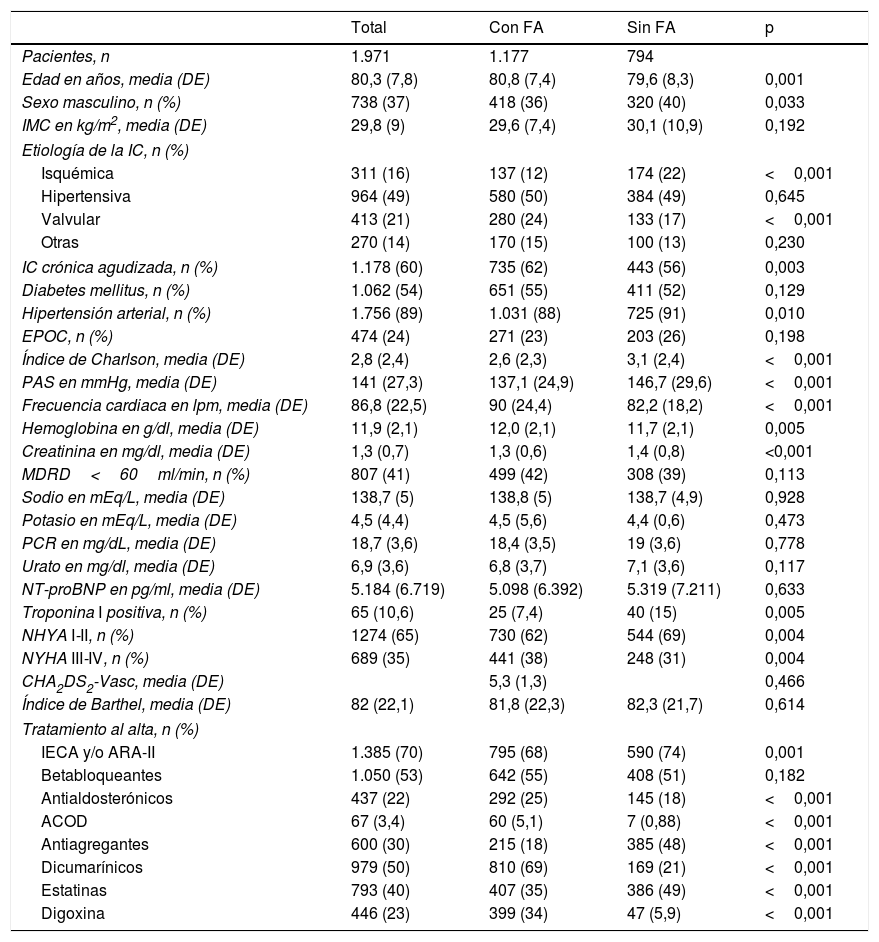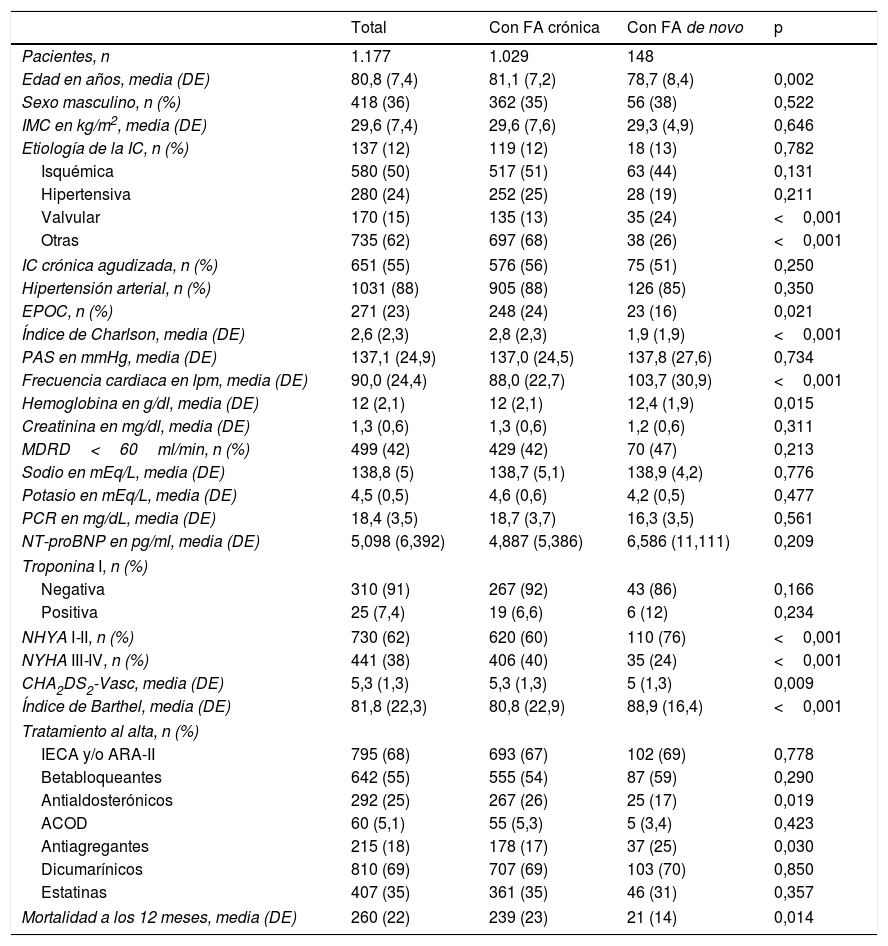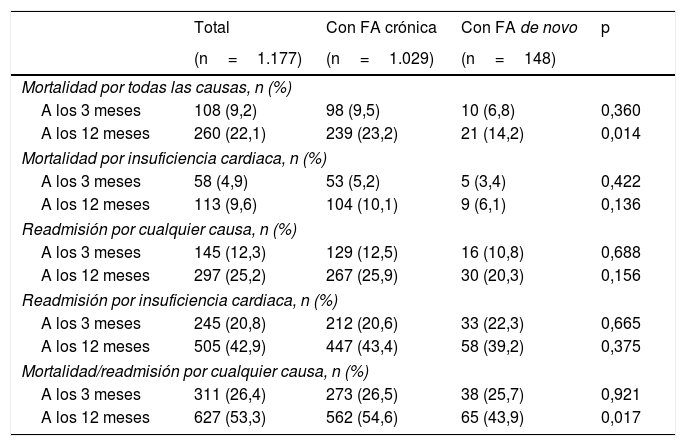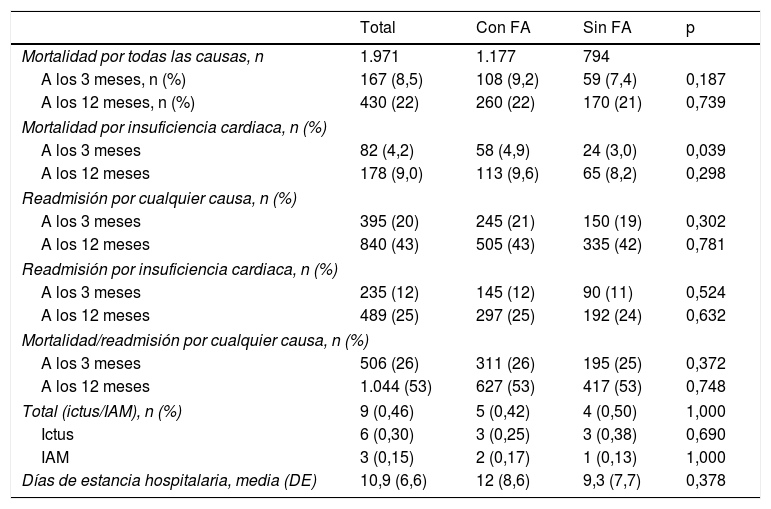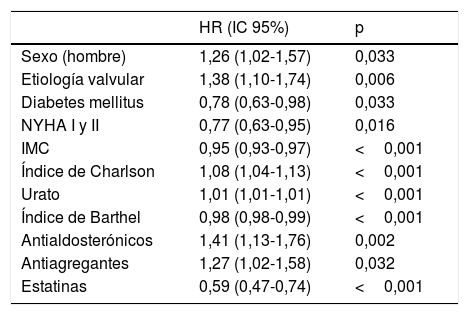La información del impacto de la fibrilación auricular (FA) en el pronóstico de los pacientes con insuficiencia cardiaca con fracción de eyección preservada (IC-FEP) es controvertido. Se analizó el pronóstico en cuanto a la mortalidad y los reingresos al año de los pacientes con IC-FEP y FA.
MétodosEstudio observacional y prospectivo en 1.971 pacientes con IC-FEP, que presentan un ingreso por IC aguda. Los pacientes se dividieron en 2 grupos según la presencia o no de FA. Analizamos la mortalidad, los reingresos y el combinado mortalidad/reingresos al año de seguimiento.
ResultadosUn total de 1.177 (59%) pacientes presentaban FA, con una edad media de 80,3 (7,8) años, y de ellos, 1.233 (63%) eran mujeres. El paciente con IC-FEP y FA tenía una mayor edad, era del sexo femenino y presentaba más frecuentemente un origen valvular y una menor comorbilidad medida por el índice de Charlson. Al año de seguimiento, 430 (22%) pacientes murieron y 840 (43%) fueron reingresados. Entre los 2 grupos analizados no hubo diferencia en la mortalidad por todas las causas (22 vs. 21%; p=0,739, FA vs. no FA, respectivamente) ni por causas cardiovasculares (9,6 vs. 8,2%; p=0,739, FA vs. no FA, respectivamente). En el análisis multivariable se asociaron con mayor mortalidad: la edad, el sexo masculino, la etiología valvular, la hiperuricemia y la comorbilidad. En el análisis del subgrupo con IC-FEP con FA, la presencia de FA crónica comparada con la FA de novo se asoció con una mayor mortalidad (HR 1,716; IC 95% 1,099-2,681; p=0,018).
ConclusionesEn pacientes con IC-FEP es frecuente la presencia de FA. Durante el seguimiento a un año, la presencia de FA no influye en la mortalidad ni en los reingresos hospitalarios en pacientes con IC-FEP.
The impact of atrial fibrillation (AF) on the prognosis of heart failure with preserved ejection fraction (HFpEF) is still the subject of debate. We analysed the influence of AF on the prognosis on mortality and readmission in patients with HFpEF.
MethodsProspective observational study in 1,971 patients with HFpEF, who were admitted for acute heart failure. Patients were divided into 2 groups according to the presence or absence of AF. We analysed mortality, readmissions and combined mortality/readmissions at one year follow-up.
ResultsA total of 1,177 (59%) patients had AF, mean age 80.3 (7.8) years and 1,233 (63%) were women. Patients with HFpEF and AF were older, female, greater valvular aetiology and lower comorbidity measured by the Charlson index. At the one year follow-up, 430 (22%) patients had died and 840 (43%) had been readmitted. In the 2 groups analysed, there was no difference in all-cause mortality (22 vs. 21%; P=.739, AF vs. no-AF, respectively) or cardiovascular causes (9.6 vs. 8.2%; P=.739, AF vs. no-AF, respectively). In the multivariable analysis, factors associated with higher mortality were: age, male, valvular aetiology, uric acid, and comorbidity. In the analysis of the subgroup with HFpEF with AF, the presence of chronic AF compared to de novo AF was associated with higher mortality (HR 1,716; 95% CI 1,099-2,681; P=.018).
ConclusionsIn patients with HFpEF, the presence of AF is frequent. During the one-year follow-up, the presence of AF does not influence mortality or readmissions in patients with HFpEF.
Artículo
Comprando el artículo el PDF del mismo podrá ser descargado
Precio 19,34 €
Comprar ahora







